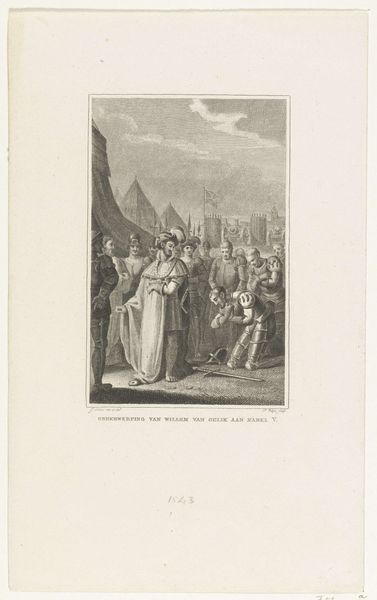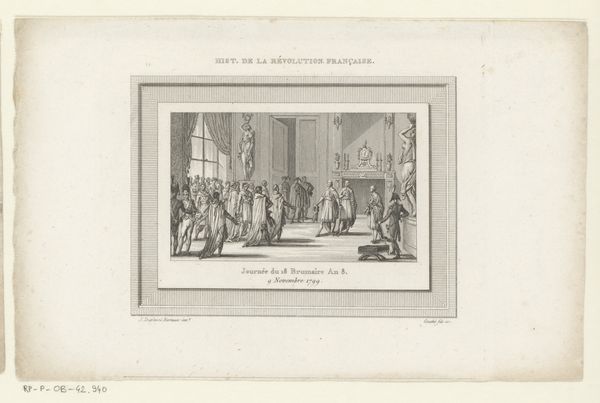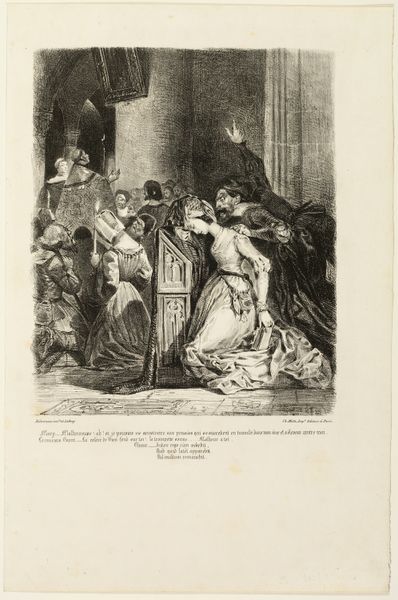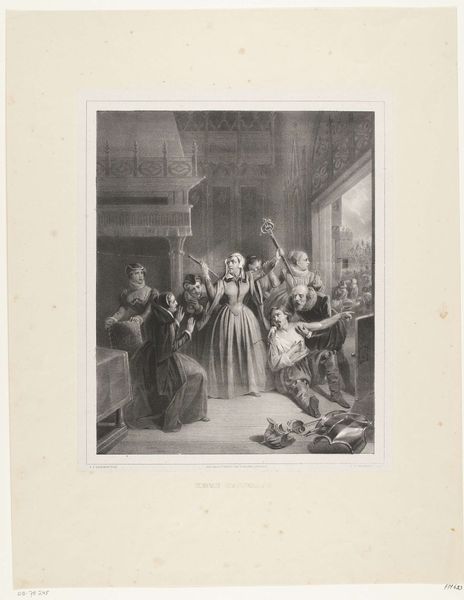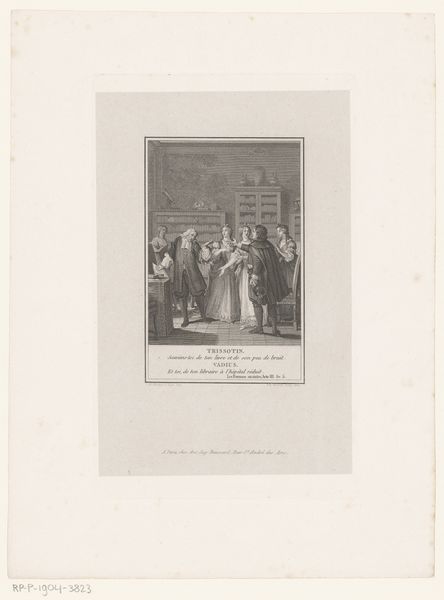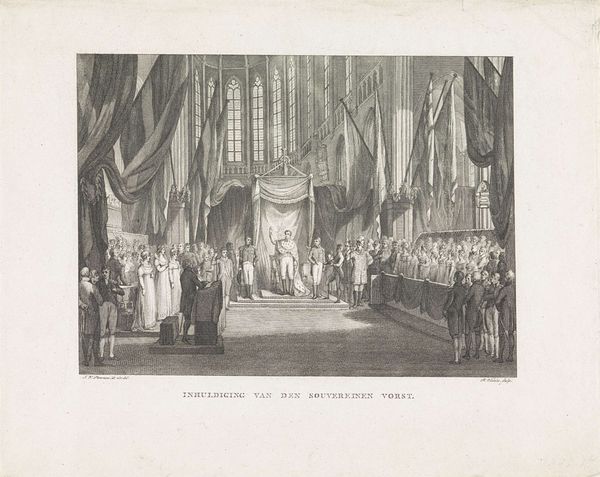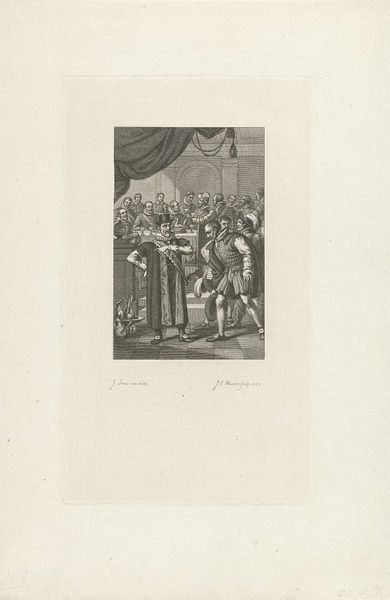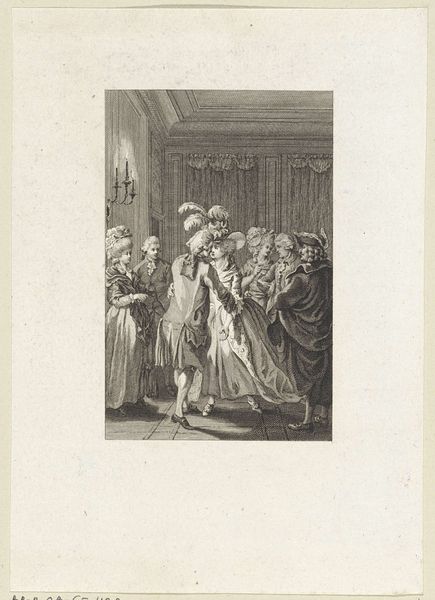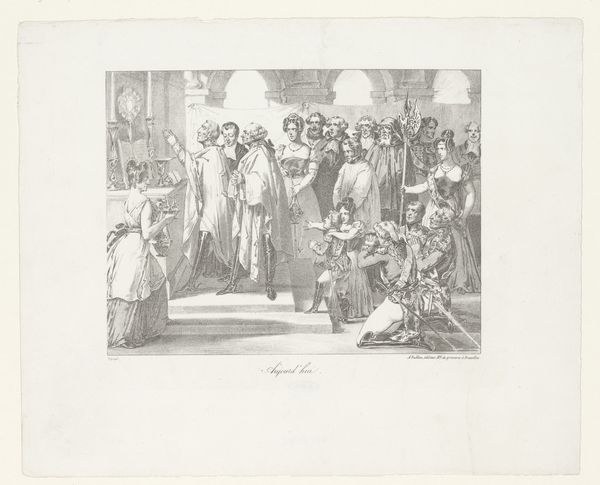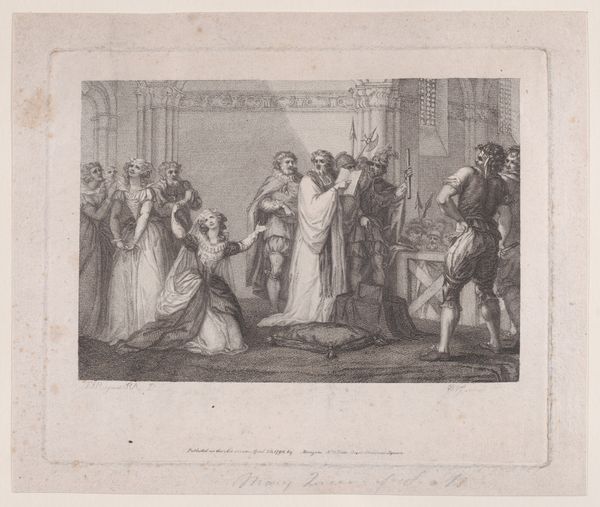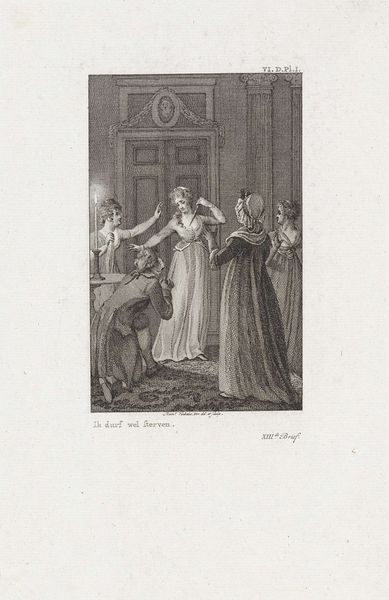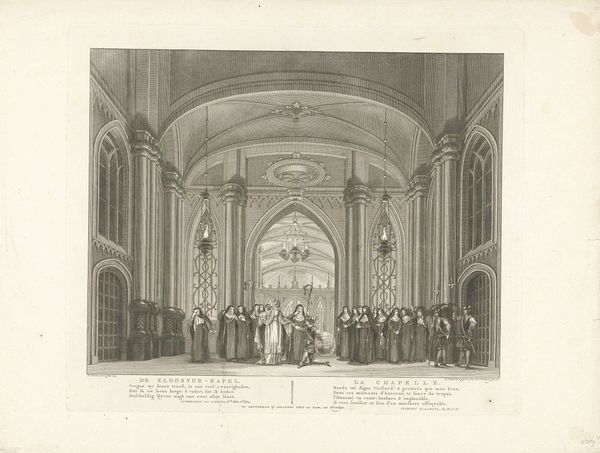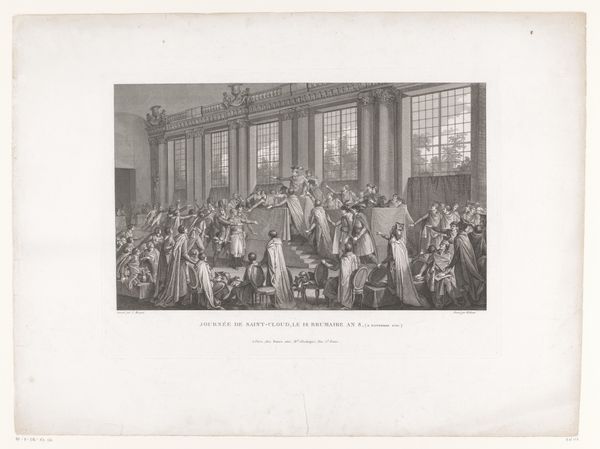
Dimensions: height 150 mm, width 91 mm
Copyright: Rijks Museum: Open Domain
Editor: "Koningin in gesprek met een hofdame," or "Queen in Conversation with a Lady-in-Waiting," is an engraving made in 1774 by Jan Punt. It resides here at the Rijksmuseum. There's such dramatic energy radiating from this print—almost chaotic with the density of figures. Curator: Indeed. The density serves to concentrate our focus. Punt’s strategic use of line weights creates a deliberate hierarchy. Notice the contrast between the detailed rendering of the central figures and the more schematic depiction of the crowd. This creates a powerful sense of depth. Editor: Absolutely. I immediately pick up on the attire – those magnificent ruffs and puffed sleeves signify wealth and power, and perhaps subtly express rigid social structures. The setting suggests a pivotal moment in royal life, fraught with historical implications. Curator: Let's deconstruct that attire further. The interplay of light and shadow on the fabric’s folds imbues them with volume. Punt masterfully manipulates texture through varied hatching and stippling, giving the figures both weight and presence. Editor: I am curious about the symbolic exchange or interaction happening between the Queen and her attendant – there seems to be either an urgent warning or sharing of an important secret! How might contemporary viewers have read that moment? Curator: An intriguing observation. But consider the composition as a closed system. The Queen and lady-in-waiting create a clear central focal point, their arrangement adheres to certain principles that lead the eye without needing the specifics of the content. Editor: Still, these royal portraits and genre-based compositions offer invaluable portals into the mindset of the Baroque era. Punt preserves a moment, both intensely personal and decidedly political. Curator: The success here truly rests on Punt's ability to use very basic materials and compositional strategies to create something both arresting and intellectually engaging. Editor: In seeing it today, perhaps the value comes from what these symbols and depictions can reflect back at our own cultures, biases, and desires in relation to history, politics and hierarchy.
Comments
No comments
Be the first to comment and join the conversation on the ultimate creative platform.
